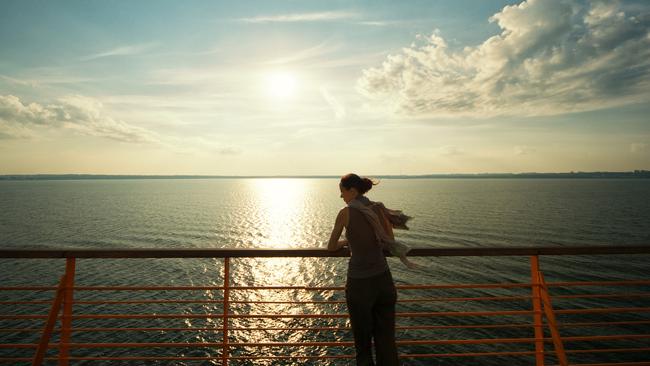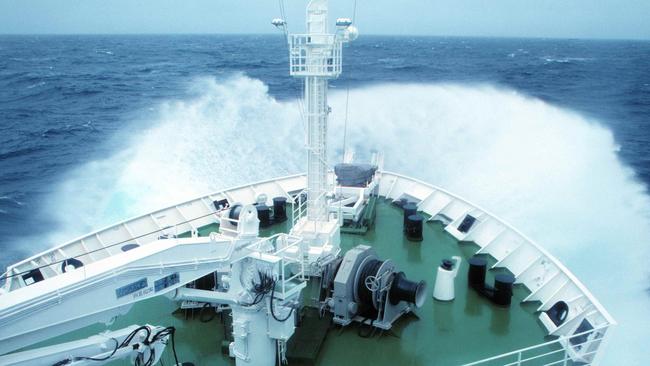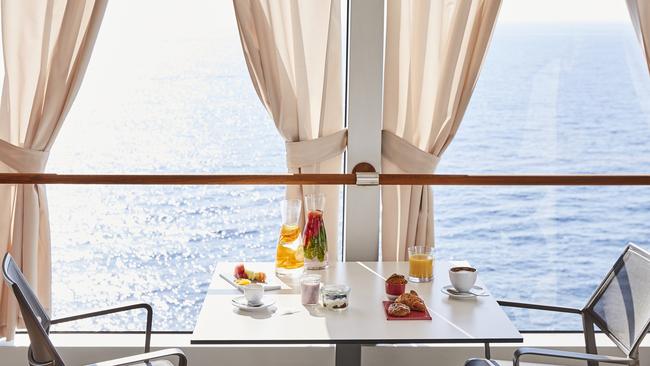Don’t let seasickness stop you: expert tips for a smooth cruise experience
From choosing the right cabin to packing CBD oil and sucking on a lime, here are the best ways to stop feeling nauseous on a ship.

Let’s face it, seasickness is miserable. It can strike anyone, at any time, from those on their maiden voyage to the saltiest of sea dogs. But should worries about mal de mer stop you from booking that dream voyage? The answer is no. There are many ways to minimise seasickness and modern cruise ships are built for a smooth ride, with stabilisers – giant fins that protrude from the hull – helping to calm the side-to-side rolling that turns many travellers green.
Here’s all you need to know about seasickness from those in the business, and why the spectre of it shouldn’t put you off cruising.
1. Understand the science
“Motion sickness is a recognised phenomenon of symptoms provoked by different types of vehicular movement,” Dr Todd Green, lead GP at Livi, a digital healthcare company, says. “Continuous or repetitive turns, tilts and swinging motions during travel can reliably produce nausea and vomiting in susceptible individuals, probably resulting from a mismatch and/or overload of different sorts of sensory information going to the brain.” But does worrying make it worse? “Anxiety can be an exacerbating factor in nausea of any cause,” Green says. “That is, feeling nauseous can commonly lead to anxiety about the potential to vomit, which in turn can worsen the nausea and may lead to vomiting.”
2. Dose up
Not all over-the-counter remedies are the same. “Hyoscine has the best evidence for medical prevention of motion sickness, which is available over the counter as tablets in medications such as Travacalm or patches such as Scopoderm (available to buy on some ships),” Green says. “Antihistamines ( like Phenergan) may be less effective and more sedating, but are another option to use instead of or alongside hyoscine.”

3. Time it right
“If you are going on a cruise and you think there’s a possibility of inclement weather, start taking the seasickness prevention tablets before you sail and the medication will be in your system,” Mark Cameron, chief engineer on the French-owned cruise ship Renaissance says.
4. Try acupressure bands
Acupressure wrist bands such as Sea-Band work by stimulating P6, the acupressure point on the inside of your wrist which is associated with nausea relief. Too good to be true? There are several published clinical studies that demonstrate the effectiveness of P6 acupressure in relieving sicknesses, including morning sickness and chemotherapy. Recently the bands have been used to tackle the nausea associated with medications such as the type 2 diabetes treatment, Ozempic. They’re drug-free, have minimal side-effects and for many are surprisingly effective. They can even work for hangovers.
5. Choose your cabin carefully
The poshest suites are often on a high deck and at the front or back of the ship. But this may not work out well for a nervous sailor. “We do sometimes hear concerns about seasickness,” Edwina Lonsdale, managing director of the luxury cruise travel agent Mundy Cruising says. “Choosing your cabin position carefully is helpful. We recommend a lower deck and comfortable midship position where any movement is minimised.”

6. Think about your itinerary
If you’re concerned about seasickness, don’t pick the notoriously choppy Bay of Biscay or the Drake Passage for your first cruise. Go for something gentler and avoid ocean crossings. “We have as good as eliminated sea days from our itineraries,” Rune Thomas Ege, senior vice-president of communications at SeaDream Yacht Club says. “Instead of crossing from Florida, our yachts spend full voyages in small areas such as the Virgin Islands. Instead of long loops in the eastern or western Mediterranean, we explore smaller areas, covering the Greek isles, or the French and Italian rivieras.”
7. Nibble on ginger and apple
“While this may sound like an old wives’ tale, eating an apple or nibbling on a bit of ginger can help with motion sickness,” Bob McGowan, head of operations at Ambassador Cruise Line, says. “If you’re beginning to feel a little unsettled in the stomach, try some ginger tea with your breakfast, or dive into the fruit bowl for a green apple.” I can vouch for Gin Gins, chewy sweets made by The Ginger People and available at supermarkets, and ginger tea – pack a box of each in your luggage.

8. Eat – and look at the horizon
“I got seasick once, when I started at sea, but never since,” Julian Brackenbury, a general manager at Virgin Voyages, says. “Never have an empty stomach. It sounds odd, but it’s true: eat something. Go out on deck and look at the horizon – fresh air and a horizon view helps. Looking directly over the side at choppy waves does not help.”
9. Take what the crew are taking
“We offer a traditional Indonesian remedy that consists of ginger and herbs in a sachet,” Yeray Moreno, head of experience and conservation at Rascal Voyages, which specialises in small-ship sailings in Indonesia, says. “This is what locals take to prevent seasickness.” The main ingredients are ginger, fennel, Indian screw tree, clove and mint. The remedy is called Tolak Angin, although you’ll probably have to wait until you get to Indonesia to acquire some.
10. Calm yourself with CBD
Cannabidiol (CBD) oil is popular for calming nerves. It’s derived from the cannabis plant but doesn’t contain tetrahydrocannabinol (THC), the main psychoactive ingredient that makes you high. CBD oil is available in Australia through prescription. According to the CBD oil company Mindful Extracts, by working with your body’s endocannabinoid system, “CBD could help reduce nausea and other uncomfortable feelings associated with motion sickness. Our CBD oil is used by customers to effectively treat nausea caused by chemotherapy, for example, or nausea caused by anxiety and stress.”

11. Sniff or suck on citrus
Jo O’Connell, a travel consultant for the Dorset-based company Not Just Travel, vouches for lime juice. “On a very chopy diving voyage in Egypt, the boat was lurching up and down,” she says. “I was feeling horrendous until one of the crew gave me half a lime to suck. The relief was instantaneous and I felt absolutely fine for the rest of the journey, despite the rollng waves.” Jeremy Clubb, the founder of the expedition specialist Antarctica Cruises, adds: “Sniffing on citrus essential oils when you’re seasick is a great way to relieve your symptoms. They act as a kind of counterstimulant, effectively distracting your body from its symptoms, and the compounds are also believed to have a calming effect on the central nervous system.”
12. To booze or not to booze?
Medics would always suggest avoiding alcohol, but some seafarers think differently. Port and brandy is a traditional “cure”, as is gin and bitters – although you may not be able to distinguish seasickness from your hangover the next day. More seriously, especially if you are vomiting, staying hydrated by sipping water or coconut water, which is rich in electrolytes, and avoiding caffeine is likely to have a better outcome.
Still not convinced? You could always try a river cruise.
THE TIMES
If you love to travel, sign up to our free weekly Travel + Luxury newsletterhere.




To join the conversation, please log in. Don't have an account? Register
Join the conversation, you are commenting as Logout